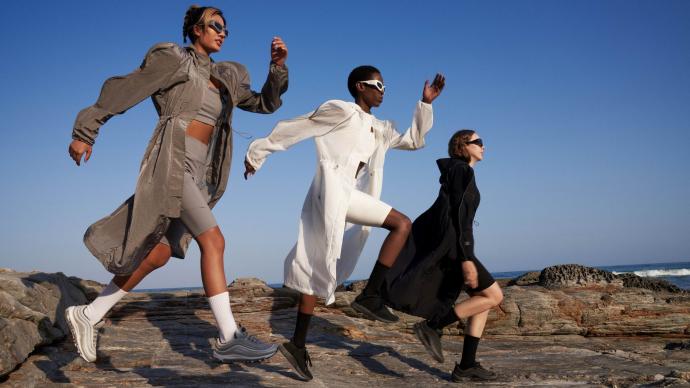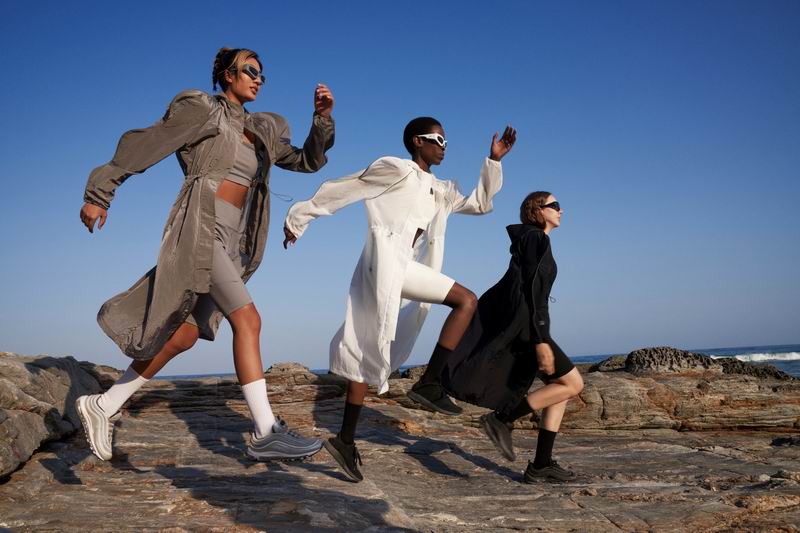
Spring is coming to summer, and cities under the epidemic are gradually returning to their former vitality. The fitness boom set off by home life also extends to the outdoors. Camping, hiking, cycling... people have threw themselves into the embrace of nature, let the sun bathe their lives, cast aside temporary worries, and welcome the freedom of body and mind.
The high temperature and sweltering heat and strong sunshine in summer also make the outdoors a playground for ultraviolet rays. With the continuous improvement of people's skin protection awareness, the sun protection clothing market is rapidly expanding. CIC data shows that the market size of China's sun protection clothing has increased from 45.9 billion yuan in 2016 to 61.1 billion yuan in 2021, and is expected to reach 958 million in 2026. billion.
How can a thin summer coat be effective in sun protection? In the face of multiple functional parameters and styles, how can consumers easily choose less trampling?
Look at the "Sun Protection Factor of Clothes" UPF
There is a prescribed action for choosing sunscreen clothing, that is, look at the description of the UPF (Ultraviolet Protection Factor) value, and pay attention to whether the clothing tag/label is marked with the national standard number GB/T 18830-2009 and UPF value. If it is a skin garment, its implementation standard should be marked with FZ/T 74007-2019; if it is an enterprise standard, it should also have a corresponding UPF value description. Under the same conditions of UPF, greater skin coverage will also improve the sun protection effect of clothing. For example, a hat with a wide brim or a shawl on the neck.
Similar to the SPF (Sun Protection Factor) rating system used for sunscreen products, UPF is a rating system used for clothing. The basic requirements for a textile to be marked with UV protection are that the UPF must be above 40, and the UVA penetration rate must be less than 5%.
UPF 30 means that about 1/30 (about 3%) of the UV radiation passes through the fabric of the garment. A UPF 50 garment allows approximately 1/50 (approximately 2%) UV transmission. Any fabric with less than 2% UV transmittance is marked as UPF 50+.
Fabrics below UPF 15 are not considered UV resistant. For example, a regular white cotton tee has a UPF rating of about 5.
These factors directly affect the effect of sunscreen
Factors such as fabric structure, fiber type, clothing color, etc. can affect the sun protection effect of clothing. Usually without additional processing,
Dark fabrics generally provide more UV protection than light-colored fabrics;
In the same color, more saturated shades provide better sun protection than lighter shades;
A denser weave provides more sun protection than a looser weave;
Polyester and nylon provide more sun protection than cotton, silk and linen.
What external factors can reduce the effectiveness of sun protection clothing?
Fabric Moisture: For many types of materials, moisture can significantly reduce the UPF rating of a fabric. Moisture-proof, quick-drying has also become a plus point for sunscreen clothing. Among them, waterproof means that the surface of the fabric has good anti-wetting performance (does not have anti-penetration performance).
Fabric Abrasion: As fabric wears or fades, its ability to block UV rays decreases accordingly.
Fabric Stretch: Stretch fabrics can lose a lot of UPF. The current sunscreen clothing is mainly loose cut, and the more loosely cut hard fabric can increase the heat dissipation speed through air flow.
Washing Effects: Garments can be checked to see if their UPF rating is indicated for a specific number of washes.
The high temperature and sweltering heat and strong sunshine in summer also make the outdoors a playground for ultraviolet rays. With the continuous improvement of people's skin protection awareness, the sun protection clothing market is rapidly expanding. CIC data shows that the market size of China's sun protection clothing has increased from 45.9 billion yuan in 2016 to 61.1 billion yuan in 2021, and is expected to reach 958 million in 2026. billion.

Bosideng cross-border co-branded Chinese designer brand ANNAKIKI to launch the "City Camping Series" sun protection clothing.
Today, physical "hard" sun protection clothing ranges from hats, masks, ice sleeves to sun protection clothing. At the same time, consumers' sun protection needs are also constantly subdivided, gradually shifting from outdoor professional sun protection to daily sun protection, and the demand for use shows a trend of refinement and fashion.How can a thin summer coat be effective in sun protection? In the face of multiple functional parameters and styles, how can consumers easily choose less trampling?
Look at the "Sun Protection Factor of Clothes" UPF
There is a prescribed action for choosing sunscreen clothing, that is, look at the description of the UPF (Ultraviolet Protection Factor) value, and pay attention to whether the clothing tag/label is marked with the national standard number GB/T 18830-2009 and UPF value. If it is a skin garment, its implementation standard should be marked with FZ/T 74007-2019; if it is an enterprise standard, it should also have a corresponding UPF value description. Under the same conditions of UPF, greater skin coverage will also improve the sun protection effect of clothing. For example, a hat with a wide brim or a shawl on the neck.
Similar to the SPF (Sun Protection Factor) rating system used for sunscreen products, UPF is a rating system used for clothing. The basic requirements for a textile to be marked with UV protection are that the UPF must be above 40, and the UVA penetration rate must be less than 5%.

This week, as UNIQLO Shanghai stores resume work one after another, a new series of sun protection clothing is launched.
SPF is a measure of the effectiveness of a sunscreen against UVB rays based on the time it takes for skin to turn red after exposure to UV light. UPF measures the amount of UV radiation that can penetrate fabric and reach the skin. Another important difference between the two is that UPF measures both UVB and UVA rays filtered by fabrics, while SPF measures only UVB.UPF 30 means that about 1/30 (about 3%) of the UV radiation passes through the fabric of the garment. A UPF 50 garment allows approximately 1/50 (approximately 2%) UV transmission. Any fabric with less than 2% UV transmittance is marked as UPF 50+.
Fabrics below UPF 15 are not considered UV resistant. For example, a regular white cotton tee has a UPF rating of about 5.
These factors directly affect the effect of sunscreen
Factors such as fabric structure, fiber type, clothing color, etc. can affect the sun protection effect of clothing. Usually without additional processing,
Dark fabrics generally provide more UV protection than light-colored fabrics;
In the same color, more saturated shades provide better sun protection than lighter shades;
A denser weave provides more sun protection than a looser weave;
Polyester and nylon provide more sun protection than cotton, silk and linen.

Bananai comprehensively renews the 2022 Liangpi sunscreen series.
But tight weaves, thick fabrics, and extended coverage can also increase body temperature, so many sunscreens now focus on improving the cooling and breathability of the material, such as superimposed mesh to allow air to circulate without exposing too much skin.What external factors can reduce the effectiveness of sun protection clothing?
Fabric Moisture: For many types of materials, moisture can significantly reduce the UPF rating of a fabric. Moisture-proof, quick-drying has also become a plus point for sunscreen clothing. Among them, waterproof means that the surface of the fabric has good anti-wetting performance (does not have anti-penetration performance).
Fabric Abrasion: As fabric wears or fades, its ability to block UV rays decreases accordingly.
Fabric Stretch: Stretch fabrics can lose a lot of UPF. The current sunscreen clothing is mainly loose cut, and the more loosely cut hard fabric can increase the heat dissipation speed through air flow.
Washing Effects: Garments can be checked to see if their UPF rating is indicated for a specific number of washes.
Related Posts